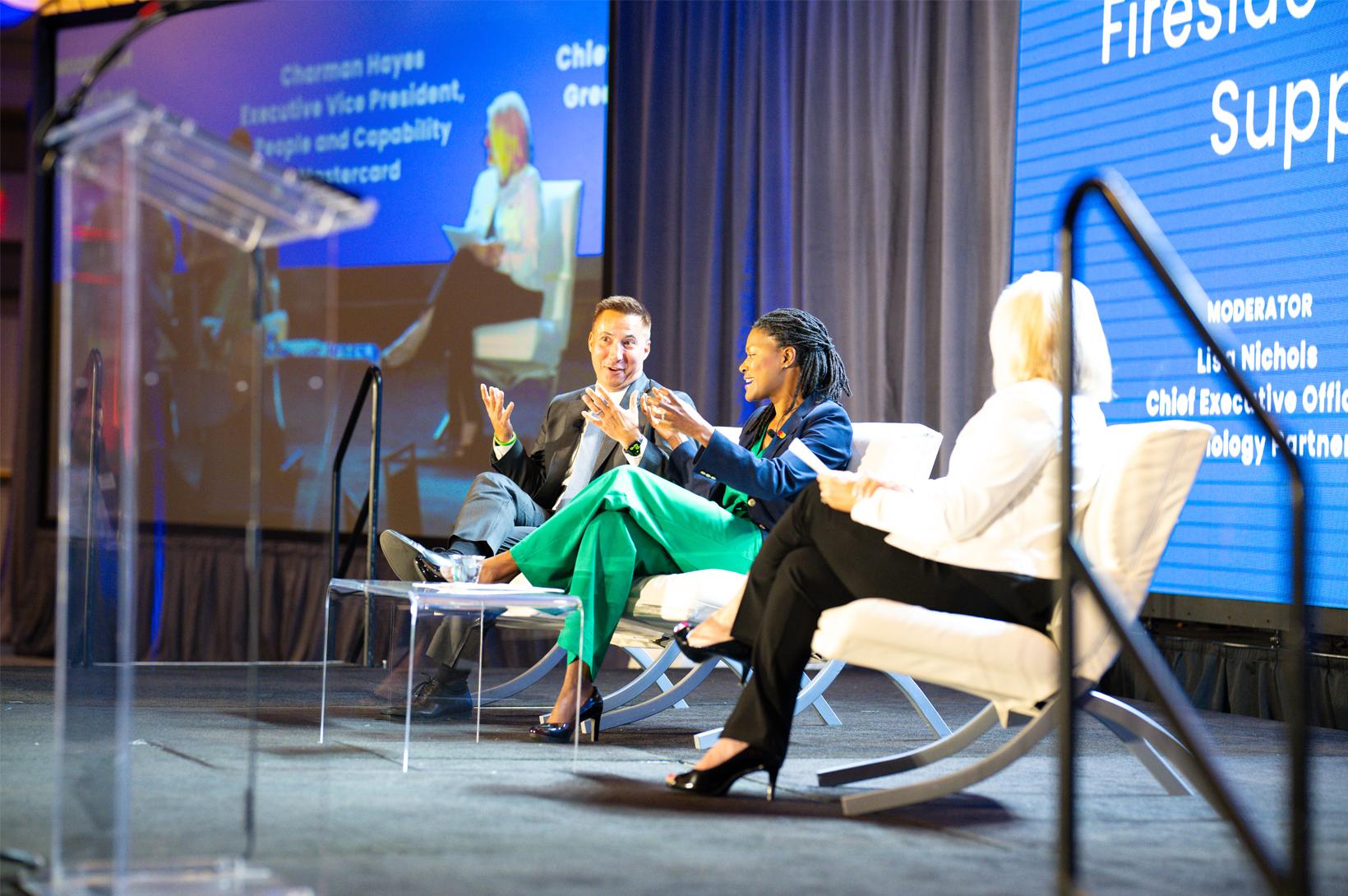
How does the St. Louis metro drive inclusive economic growth to ensure all its residents have the opportunity to thrive?
That question, and how collaboration among business and civic institutions from across the 15-county St. Louis metro can advance inclusive economic growth, was the focus of the first Inclusive Economic Growth Summit, organized by Greater St. Louis, Inc.
“As we steward the implementation of the STL 2030 Jobs Plan, our focus is on getting the region growing again and doing so in a way that ensures everyone in the metro has the opportunity to thrive,” said Jason Hall, Greater St. Louis, Inc. CEO. “The Inclusive Economic Growth Summit provides an opportunity to bring leaders from across the region together to talk, listen, and learn how we can better collaborate as one metro to drive inclusive economic growth and continue the momentum that is building here.”
Defining “Inclusive Economic Growth”
The Summit featured presentations and discussions with national experts as well as local business, civic, and academic leaders. Discussions explored how the region can work together to support inclusive economic growth, some of the strategic initiatives underway in the metro that are expanding opportunity for all, and successful solutions to regional challenges, from job training for growing industries to embracing inclusive economic growth.
A critical goal of the Summit was to define inclusive economic growth for its attendees. The STL 2030 Jobs Plan defines inclusive economic growth as:
Broad-based economic growth that enables all stakeholders in the St. Louis metropolitan area (including residents, workers, entrepreneurs, companies, organizations, and communities) to realize their full potential. Such growth enables the widest range of people and places to both contribute to and benefit from economic success.
Inclusive growth aims to produce more prosperity alongside greater equity in opportunities and outcomes by substantially increasing the number of quality jobs and radically reducing racial and spatial disparities in income, health, and wealth that have undermined metropolitan performance for decades.
“One of our goals with this Summit is to ensure that everyone has a shared understanding of what inclusive economic growth is and how we can all work together to advance it,” said Valerie Patton, Chief Diversity Equity, and Inclusion Officer for Greater St. Louis, Inc. “When we all know what it is we are working toward, it is easier for us to speak with a unified voice and act with common purpose.”
STL 2030 Progress
The Inclusive Economic Growth Summit also included the launch of a new online tool, STL 2030 Progress, developed to track the region’s advancement toward inclusive economic growth goals and visually highlight the investments, developments, and initiatives driving growth across the 15-county bi-state metro.
STL 2030 Progress is the regional effort called for in the STL 2030 Jobs Plan to measure the metro’s progress on inclusive growth. The website — a data-driven toolkit — consists of three main components:
- Metro growth metrics, a measurement of our region’s performance through macroeconomic indicators that sets targets around “North Star” inclusive growth metrics for 2030.
- Capital projects map, a digital interactive map of major economy-shaping developments and infrastructure investments across the 15-county bi-state metro.
- Strategic initiatives tracker, which highlights major public and private efforts since 2021 that are advancing the priority strategic initiatives called for in the STL 2030 Jobs Plan.
The website is dynamic and will be updated on an ongoing basis. Visitors to the website can submit their own ideas and information to be added.
Targets for Inclusive Economic Growth
In rolling out STL 2030 Progress, metro leaders announced targets for four core inclusive economic growth metrics — the “North Star” metrics for inclusive economic growth — for the metro to work toward by the end of the year 2030.
“These North Star metrics will answer the questions ‘are we growing?’ and ‘is that growth inclusive?’” said Greater St. Louis, Inc. Chief Strategy Officer Sam Murphey. “With specific goals to work towards and a resource like STL 2030 Progress to measure our progress, we hope to answer ‘yes’ to both those questions at the end of this decade.”
Those North Star metrics for the St. Louis metro and the targets announced for them are (all through 2030):
- Population growth – 0.7% average annual growth (adding 180,000 people to the metro)
- GDP growth – 2.0% average annual growth in the metro’s GDP
- Median household income – decrease the Black-to-white household income gap by 50% (would result in an increase in average Black household income of $18,000); 4.4% increase in average annual growth (would result in an increase of $33,000 in average household income)
- Home ownership rate – decrease the Black-to-white home ownership gap by 30% while keeping the overall metro home ownership rate above 71%
“This work is nationally significant,” said nationally renowned urban policy expert Bruce Katz, co-author, The New Localism: How Cities Can Thrive in the Age of Populism, and Founder, New Localism Associates, which helped craft the STL 2030 Jobs Plan. “What St. Louis is doing on inclusive economic growth is a model every other metro area in the country should follow.”
Media Contact: Tony Wyche | 314-398-9991 | Tony@GreaterSTLInc.com
